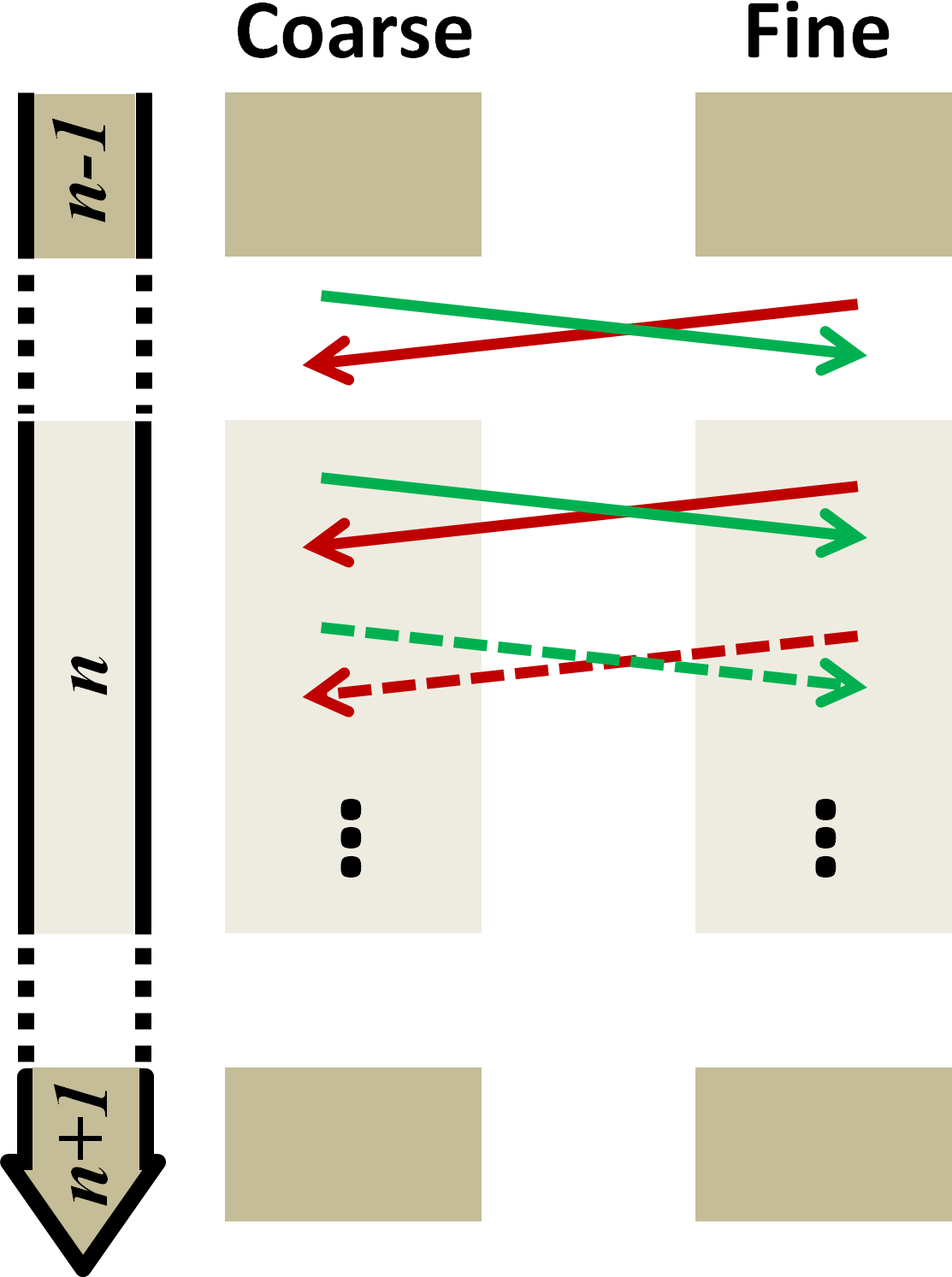Seamless Multiscale Forecasting: Hybridizable Unstructured-mesh Modeling
and Conservative Two-way Nesting
|
P.F.J. Lermusiaux, P.J. Haley, Jr., C. Mirabito Massachusetts Institute of Technology
|
Project Summary Ongoing MIT-MSEAS Research NOPP-supported Publications Additional Links Background Information
|

|
|
| This research is sponsored by the National Oceanographic Partnership Program (NOPP). | |||
Project Summary
One of our research thrusts is to derive and apply advanced techniques for multiscale modeling of tidal-to-mesoscale processes over regional domains (nearshore-coastal-basin) with complex geometries including shallow seas with strong tides, steep shelfbreaks with fronts, and deep ocean interactions. On the one hand, our conservative implicit two-way nesting for realistic multi-resolution modeling has enabled such high-fidelity coupled multiscale dynamics studies. On the other hand, a high-order multi-dynamics modeling capability based on novel hybridizable discontinuous Galerkin (HDG) numerical schemes is also promising for seamless conservative multi-resolution forecasting. These two research topics are the backbones of our NOPP research project.
Background information is available below.
| Top of page |
Ongoing MIT-MSEAS Research
Long-Term Goal
Improve, utilize and verify:
- HYCOM-downscaling schemes and conservative two-way nesting schemes for seamless multiscale forecasting and dynamical analyses of realistic coupled physics at abrupt topography, and
- High-order non-hydrostatic HDG schemes for high-fidelity, conservative, and efficient multi-dynamics modeling.
Objectives:
- Improve and utilize our schemes for downscaling, conservative implicit two-way nesting, nested and open BCs, and adaptive generalized vertical coordinates, so as to allow efficient multi-resolution modeling
- Improve and utilize our high-order Hybridizable Discontinuous Galerkin (HDG) code to complete process modeling studies relevant to flows encountering abrupt topography
- Contribute to real-time forecasting and data-assimilative simulations for FLEAT and for inputs to acoustics modeling and coupled simulations
- Perform multi-resolution re-analyses, process studies and multiscale dynamics analyses focusing on interactions of currents and circulation features with topographic waves, internal tides or bottom gravity currents
- Collaborate with NOPP team and NRL, transferring approaches, algorithms and simulations. Utilize the MIT Naval Officer education program.
Presentations and Meetings
| Top of page |
Additional Links
| Top of page |
Background Information
This project is part of the collaborative NOPP effort on the topic of "Forecasting from the Deep Ocean to the Coast".
Predictive skill in ocean forecasting continues to increase through improvements in model resolution, data assimilation, and better representation/parameterization of physical processes. While advances in modeling have been achieved for both the open and coastal ocean, the two regions are often not connected or coupled in the operational ocean forecast systems. The Navy has transitioned a global version of the HYCOM ocean model at 1/12° horizontal resolution into operations, and is currently running a tide-resolving 1/25° global ocean model in research mode. While these models enable improved basin-scale ocean forecasts, this spatial resolution does not adequately capture the full range of submesoscale dynamics and small-scale processes that are important in many local and coastal regions. Since processes and dynamics of the open ocean often drive the variability in local and coastal domains, higher-resolution models are often nested within global models to simulate and predict these fine-scale features, with communication occurring through imposed boundary conditions. As global models increase in resolution and complexity, the nesting of regional and coastal models must be done with care to ensure that the appropriate spatiotemporal information is passed through the lateral boundary to allow the finer-scale model to reliably reproduce the salient physical processes and dynamics of the smaller domain.
Additional information is available from the funding announcement.
| Top of page |



